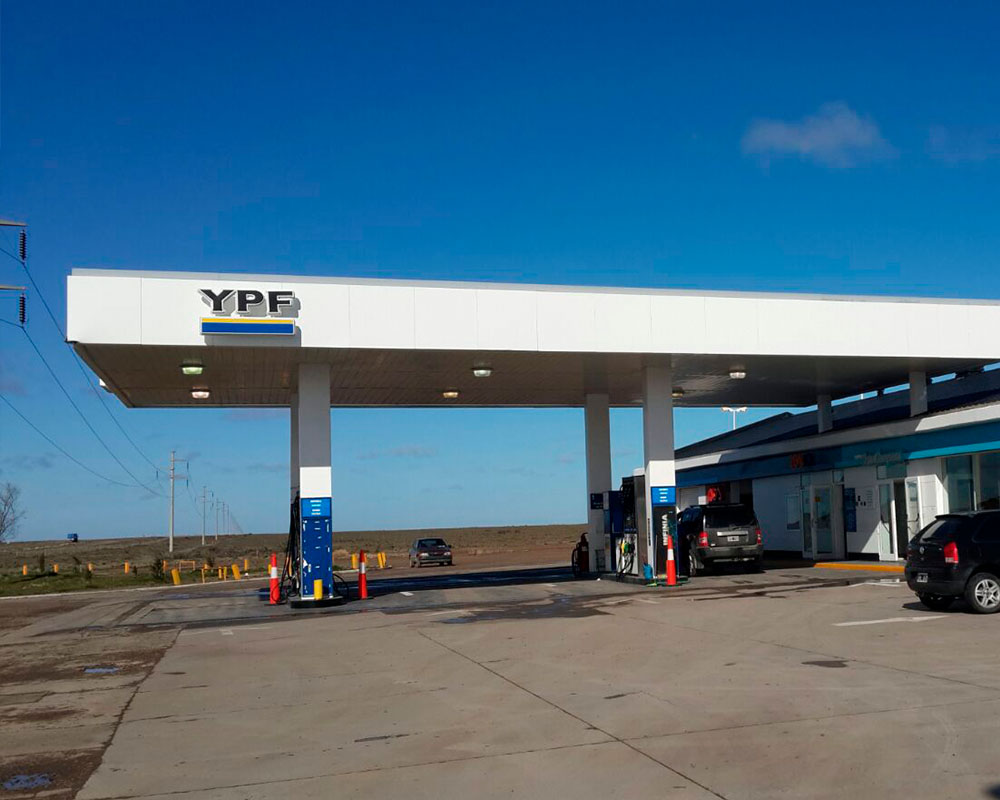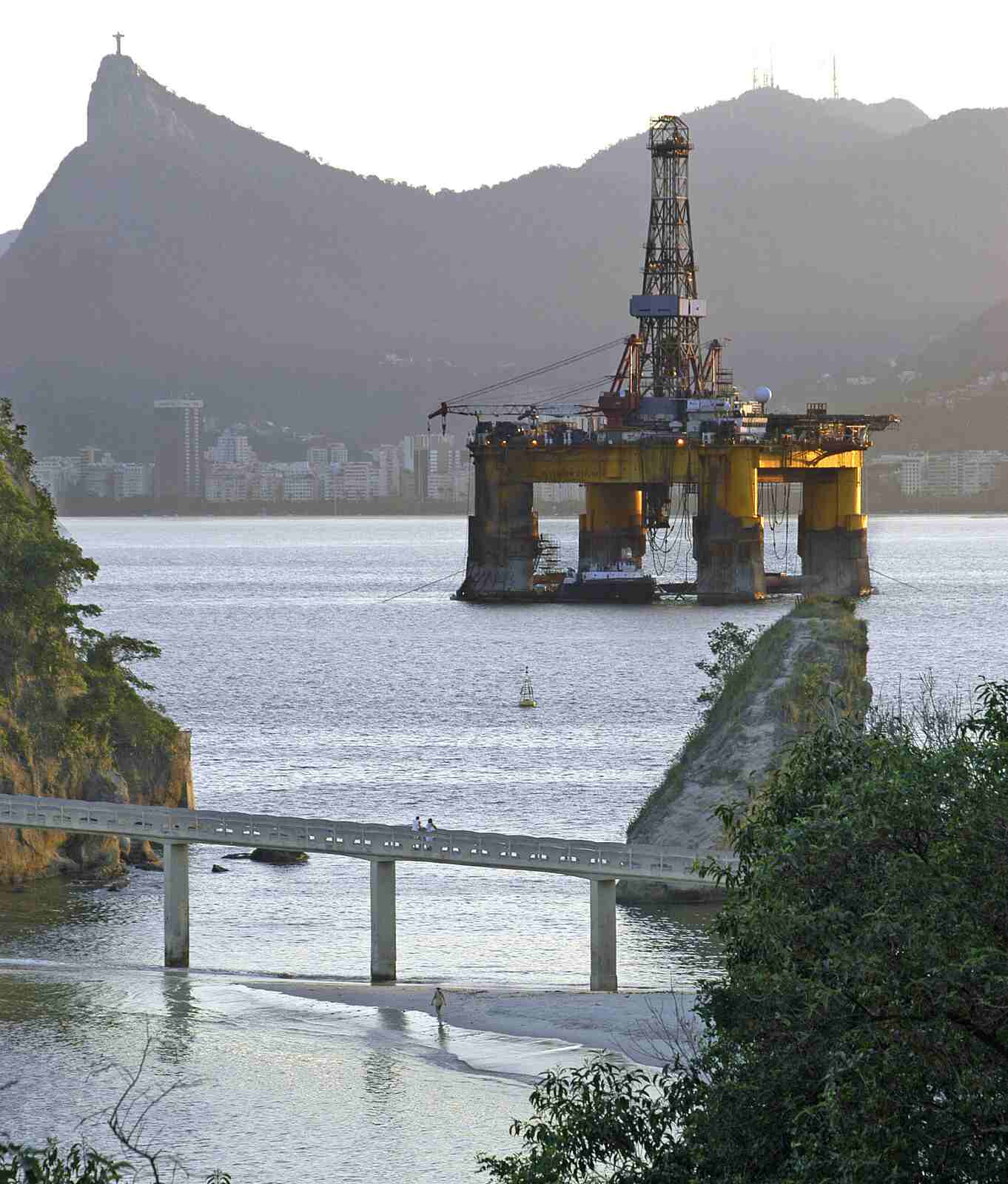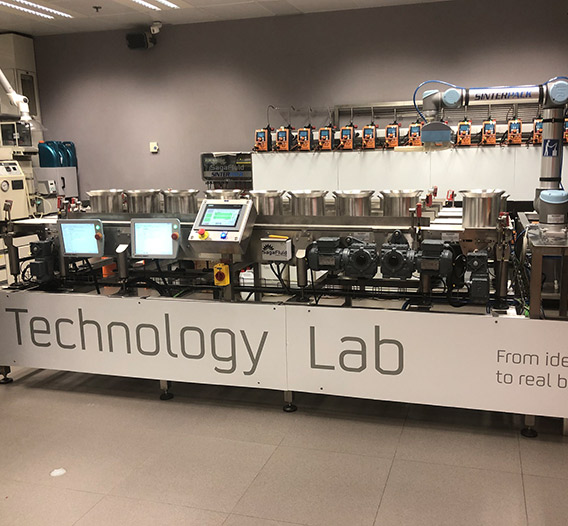Advancing towards becoming an international company
The expansion of our Company reached the Latin American, North American, African, and Russian markets. It was also a time when significant progress was made at Repsol on all levels and particularly in the technological and innovation fields.
Innovation and technology
Innovation and technology

In 2002, amidst a global context complicated by the severe economic crisis, a major project was launched:the opening of the Repsol YPF Technology Center, linking all our research and development activities in Spain. More than 400 researchers currently work in this facility using highly advanced technology in their different areas of expertise: exploration and production, refining, gas and chemicals.In addition, we made a commitment to minimize the impact our operations have on climate change, taking a public stance on the issue.
In 2004, we finished recovering fuel from the Prestige ship, as commissioned by the Spanish Government. The innovative and technological nature of this project, which involved highly technical difficulties won us the Platts Global Enery Award as the best Engineering Project of 2004. That year we also launched our first Carbon Plan with the aim of reducing CO2 emissions.
We started an intensive exploratory campaign in 2008focusing our efforts on exploring new areas, the results of which allowed us to change our company profile. Using the most advanced technology, we made over 30 hydrocarbon discoveries, some of which are the largest in the world.
In 2009, we opened the Canaport LNG regasification plant in Canada, the first of its kind to be built on the East Coast in 30 years, having enough capacity to supply up to 20% of New York and New England's gas demand.
In June 2010, we opened the first gas liquefaction plant in South America, in Pampa Melchorita, the biggest investment ever to be made in Peru in a single project. The plant is supplied with gas produced in Camisea and is designed for supplying the United States West Coast and Mexico.
In December of that same year we finalized an agreement with Sinopec to carry out the Company's exploration and production projects in Brazil's offshore. Repsol Sinopec is one of the biggest energy companies in Latin America and is valued at 17.773 billion dollars.
At the end of 2011, we entered the Asian market, producing lubricants at plants in Guangdong (China) and Kuala Lumpur (Malaysia), with four production centers in Indonesia, Japan, China and Malaysia, selling products in 11 countries there.
In 2003, we tripled our hydrocarbon production and reserves in Trinidad and Tobago, after increasing our stake in BPTT gas reserves from 10% to 13%. We started the third train of liquefaction of natural gas in the Atlantic LNG plant, and the Trinidad and Tobago government approved the construction of a fourth train.
In Russia, we bought 10% of West Siberian Resources to have an interest in projects in the country and we signed an agreement in principle with Gazprom to carry out joint projects in Europe, Latin America, Africa, and Russia. We also acquired 28% of Shenzi, one of the largest oil fields in the Gulf Coast of the United States.
In Venezuela, since we elevated our stake in the Quiamare La Ceiba Block to 75%, our production has increased to 3,900 barrels per day. A record for ethylene production was broken in Spain, our presence in Algeria strengthened, and we became the first international company to participate in the development and production of hydrocarbons in Mexico, with a contract for the Reynosa-Monterrey gas block
Transparency and sustainability
For the first time in 2006, we qualified for the most transparent oil company in its sector according to the selective Dow Jones Sustainability World and Dow Jones STOXX Sustainabilityindexes.
In 2007, we reinforced our commitment to transparency and sustainability by adopting the first corporate responsibility Master Plan.And we stayed in the Dow Jones Sustainability Index for the second consecutive year with the "Best in Class" rating. The Climate Leadership Index also ranked our strategy against climate change as one of the most advanced.
In 2012, we launched, in the middle of one of the most prolonged economic crises in the world,the expansion of the Cartagena industrial complex, a model of modernity and energy efficiency.This investment has been regarded as one of Spain’s largest.
On May 7th, using the Argentine reservoir oil tax law and at the request of Cristina Fernández de Kirchner’s government, unlawfully and in a discriminatory manner, 51% of the shares of Repsol YPF was expropriated. We responded with legal action before international organizations.
The financial strength of the company and the diversification undertaken years prior have allowed us to look toward the future with a new vision, a solid growth strategy, and a new visual identity adjusted to society's demands.
Want to know more?
Want to know more?





